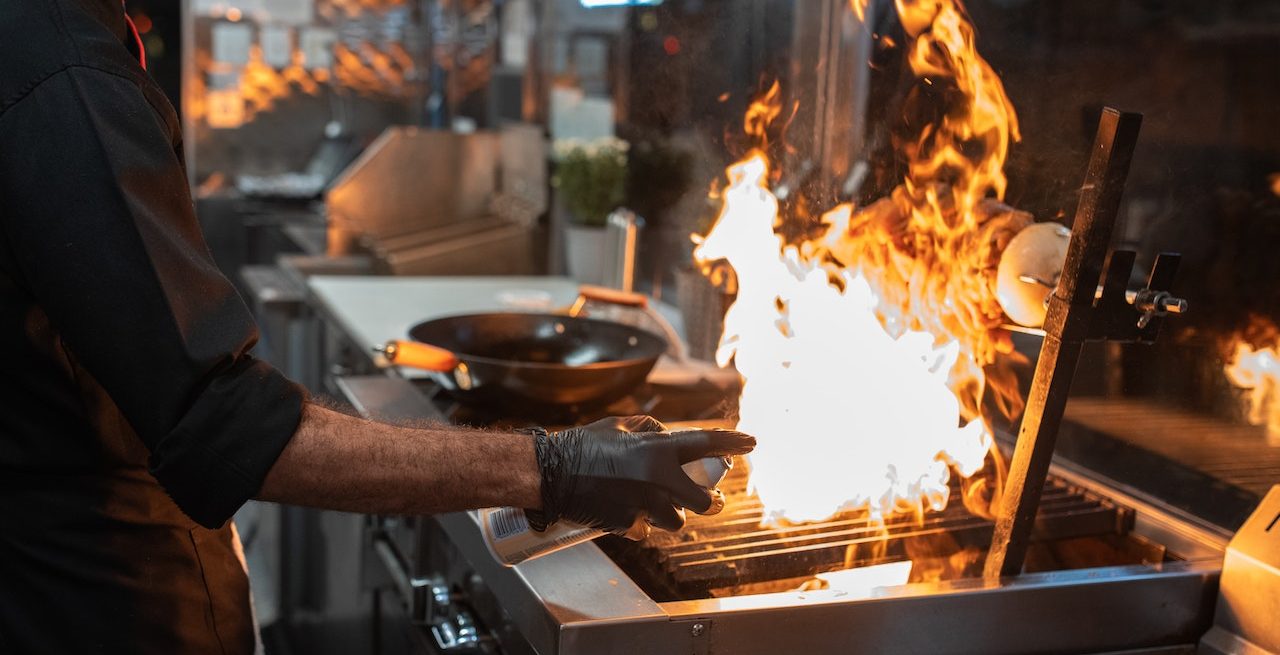Forged in the Fire: True Hospitality Born from Camaraderie and Respect
3 Min Read By Bobby Connors
The reservation was made months in advance, and each course was designed with intention and artistry. As the couple’s anniversary dinner gracefully glides toward a sweet crescendo, the lead server strides into the kitchen to pick up a beautiful brulee, only to notice the rose-shaped garnish is missing — along with the pastry chef.
After rifling through the walk-in, the server recognizes the dishwasher on duty as a potential savior in the search for strawberries. Recalling the “family meal” from earlier that day featuring delicious Tamales Colorados from the dishwasher’s native Guatemala, the server stumbles through a bit of broken Spanish and successfully promises his next portion of tamales in exchange for intel.
Absent the common language of cuisine — or even his hardworking coworker’s name — the server may have hesitated to ask for help and punctured the momentum of an otherwise beautifully executed special occasion.
In a people-powered industry dependent on sophisticated coordination, management strategies prioritizing mutual respect and enabling communication between the Front and Back of House can cultivate inclusive environments where relationships matter and memories are made.
Celebrate Diversity
With more than a quarter of restaurant and foodservice workers speaking a language other than English at home, the crystal clear communication fundamental to successful operations depends on finding ways to reduce friction and enable reliable dialogue.
Educating your staff to utilize common phrases such as “on the fly” and “to-go” in the native language of kitchen employees can lay an excellent groundwork for navigating language barriers. Knowing how to check in and ask people how they’re doing never hurts, either.
The wonderfully diverse makeup of the restaurant workforce (49 percent of employees are minorities) presents unparalleled opportunities centered around food, especially with regard to menu development and team bonding. While a cook’s family recipe for pozole may not fit the exact parameters of your brand’s menu, fresh cooking techniques and novel ingredients can inspire new creations — and nothing brings a crew together after a draining shift like a comforting stew.
Featuring a “kitchen’s choice” rotating special (with a taster for staff) or budgeting for a wide-open family meal can ensure that breaking bread occurs regularly and give cooks a chance to showcase their heritage and culinary chops. Investing in the consistent pursuit of common ground will be handsomely rewarded in heated situations when it's really crunch time.
Fortify a Clear Leadership Structure
When tickets bottleneck or there is a hiccup in timing, a single problematic order can dissolve an otherwise smooth service. As the stakes increase, so does the need for well-defined leadership and chains of command.
Establishing go-to points of contact in the kitchen for special requests and rush tickets helps to ensure continuity and allows everyone to remain focused and in their lane. Eliminating hierarchical ambiguity both solidifies roles and saves time. Sure, someone may have been promoted to sous-chef or the expo, but unrest can begin to brew if they aren’t trusted in clutch moments to handle tricky situations.
Additionally, demonstrating reverence for professional titles in real-time bolsters confidence in leaders, incentives performance through social recognition and undermines insubordination.
Strong personalities and differences in style between guest-facing and kitchen-based roles create an additional need for well-defined procedures when collaboration is key. Respectfully assertive requests to the designated leader on the line differentiate effective FOH managers and servers from disruptive individuals who place their own immediate needs above team success.
Shouting, “I need a med-well steak on the fly; forgot to ring it in!” to a weeded grill cook lands differently cushioned by established rapport and a deeply knowing glance from a familiar server.
Create Space for Authenticity
While establishing a welcoming and well-oiled operation in a demanding industry may seem like a lofty endeavor, many times the answers to personnel questions are simple:
Just ask.
Who knew that the executive chef ran an endurance race around a volcano?! How remarkable that the sauté cook works two jobs, commutes to work an hour and a half each way and sends money home to her three children in Mexico.
People’s lived experiences inform the way in which they show up in the world, and the more we know about one another the more we feel connected. Insisting that everyone knows each other’s name is non-negotiable. Understanding the “why” others have for showing up every day illustrates our lives with invaluable perspectives that can unveil common goals and align interests.
Standing shoulder to shoulder with a coworker to face a challenge galvanizes individuals in a way that purely self-oriented worldviews cannot. Creating opportunities for employees to gain insight into each other’s lives through activities such as team meetings that recognize achievements and highlight people’s unique backgrounds can establish a company culture rooted in respect.
The core values of a thriving organization empower all employees to take pride in their work and experience a sense of belonging and appreciation. This begins by implementing and following through on structural practices that allow employees to be seen, and see each other. Beyond the heat of the ovens, your guests will feel the warmth.


